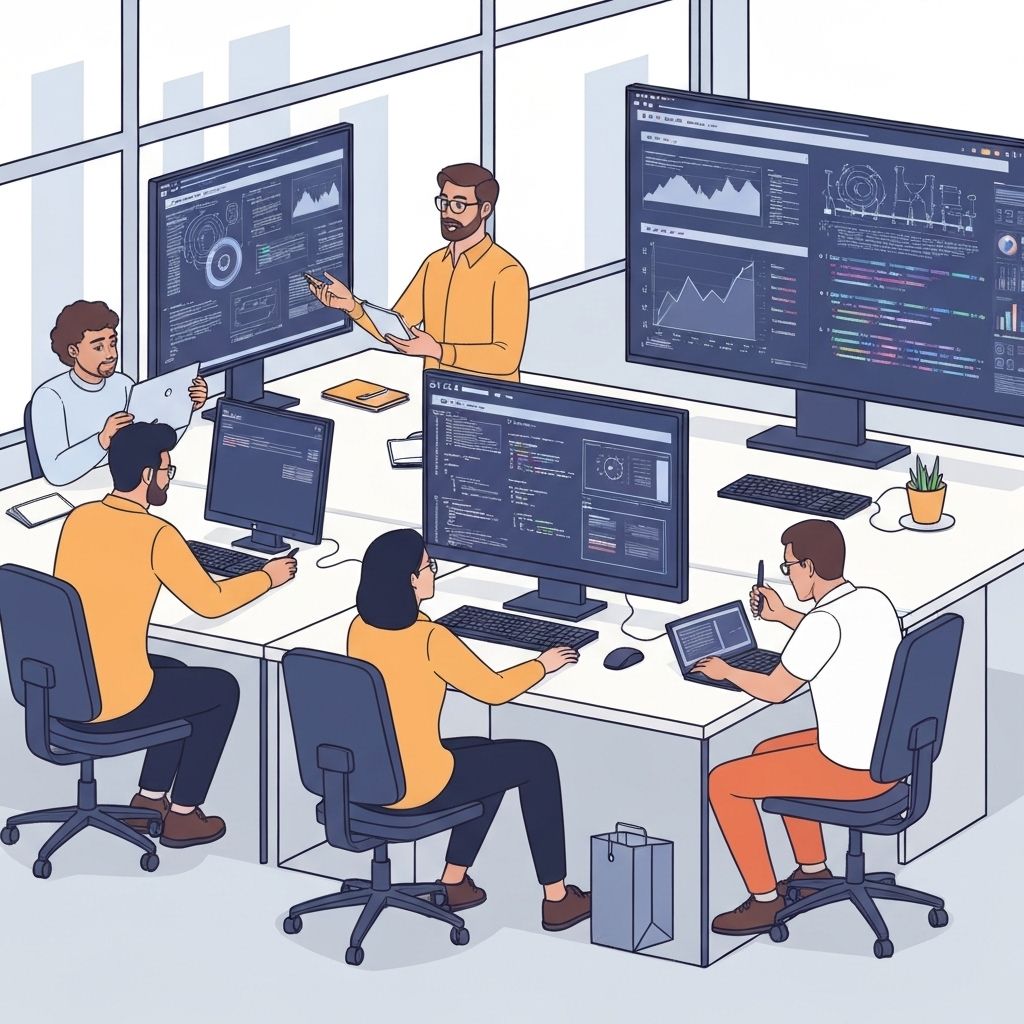
The Future of AI in Web Development
The Future of AI in Web Development
Artificial Intelligence (AI) is no longer a futuristic buzzword—it's a practical force that is reshaping the digital landscape. In the world of web development, AI has moved from being a handy add-on to becoming the very foundation of how modern applications are designed, built, and scaled.
For businesses, this transformation opens new opportunities to personalize user experiences, improve operational efficiency, and innovate at scale. For developers, it introduces new tools, workflows, and expectations that are dramatically different from the old "code and deploy" cycle.
So, where is AI taking web development next? Let's dive in.
The New Era of Web Development

From Static to Adaptive
In the early days, websites were static—simple HTML pages that displayed the same information to everyone. Over time, web apps became dynamic, fueled by databases, APIs, and frameworks like React, Angular, and Next.js.

Today, AI introduces a third era: the adaptive web, where interfaces, content, and even system logic evolve in real-time, shaped by user behavior, data context, and predictive intelligence.
Imagine a finance dashboard that learns which charts you check most and reorders them for faster insights, or an e-commerce storefront that adapts its UI layout based on your shopping style. That's not science fiction—it's happening now.
How AI is Transforming the Frontend

1. Personalized Interfaces
Instead of one-size-fits-all, AI makes personalization seamless.
- E-commerce: Show different product lineups to a budget-conscious shopper vs. a premium buyer.
- Education: Adaptive learning platforms change lesson pacing and difficulty for each student.
2. AI-Powered Design Tools
Developers and designers can now generate UI mockups or even production-ready components from text prompts. Tools like Galileo AI or V0.dev allow teams to go from idea → prototype in minutes.

This accelerates iteration cycles and frees human designers to focus on creativity, not grunt work.
3. Real-Time Optimization
AI-driven A/B testing can evaluate multiple variations of a layout simultaneously, automatically shifting traffic to the best-performing version. Over time, the site becomes self-optimizing.
Backend Gets Smarter Too

Predictive Infrastructure
Traditional scaling involves monitoring and reacting. With AI, systems can predict load spikes—say during a product launch or a seasonal sale—and pre-scale resources to avoid downtime.
Automated Security Monitoring
AI systems analyze traffic patterns, login attempts, and API usage to detect anomalies that humans might miss. For example, unusual login attempts from different geographies can trigger protective measures instantly.

Smarter Data Handling
AI-powered APIs can clean, tag, and structure incoming data on the fly. For instance, unstructured form submissions or customer feedback can be categorized automatically, saving backend teams countless hours.
Developer Productivity in the Age of AI

- Code Generation: Tools like GitHub Copilot speed up repetitive coding tasks.
- AI Debugging: Machine learning models can scan large codebases and predict likely bug-prone areas before deployment.
- Docs as Chatbots: Developers can query an AI trained on internal documentation instead of scrolling through endless wiki pages.
The result? Faster releases, fewer errors, and happier teams.
Real-World Applications

Case Study 1: E-Commerce Personalization
A leading online retailer integrated AI-driven recommendation systems. Instead of showing static "Top Products," they tailored suggestions to browsing history, seasonality, and customer intent. Result: 18% higher conversion rates.
Case Study 2: Healthcare Dashboards
Hospitals now use AI-powered dashboards that adapt in real-time. Doctors see patient data prioritized based on urgency, reducing decision-making time and improving outcomes.

Case Study 3: Enterprise Knowledge Assistants
Companies use RAG systems (Retrieval-Augmented Generation) to power enterprise search. Employees can query documents, contracts, and knowledge bases with natural language and get contextual, accurate answers.
Tools Driving the Revolution

- Next.js 15 – Optimized for AI workloads with edge runtimes.
- LangChain – Enables building intelligent, multi-step workflows using LLMs.
- Vercel AI SDK – Simplifies AI integration for React/Next.js apps.
- Vector Databases (Pinecone, Weaviate, Qdrant) – Essential for semantic search and retrieval.
- Unstructured.io – Prepares unstructured PDFs, images, and text for AI models.
Challenges to Consider

AI in web development isn't plug-and-play. Businesses must address:
- Data Privacy – Handling user data responsibly in compliance with GDPR/CCPA.
- Costs – Running LLMs can be expensive; optimization strategies are essential.
- Ethics & Bias – AI systems risk reinforcing biases if training data isn't carefully curated.
- Integration Complexity – Stitching AI pipelines into legacy stacks requires expertise.
The Road Ahead

In the next 3–5 years, expect AI-driven web development to move toward:
- Multi-Modal Interfaces – Apps that understand not just text, but also images, audio, and video.
- No-Code + AI Hybrids – Business teams using natural language to deploy working prototypes.
- Self-Evolving Websites – Sites that constantly improve themselves through autonomous optimization.
- Edge-AI Deployments – More inference happening at the edge for speed and compliance.
Final Thoughts
AI isn't just enhancing web development—it's redefining it. Businesses that adapt early will gain a competitive edge, while those who wait risk being left behind.
At The Vinci Labs, we help companies build AI-powered web applications that are not only future-ready but also scalable, secure, and compliant.
👉 Ready to explore how AI can transform your digital presence?